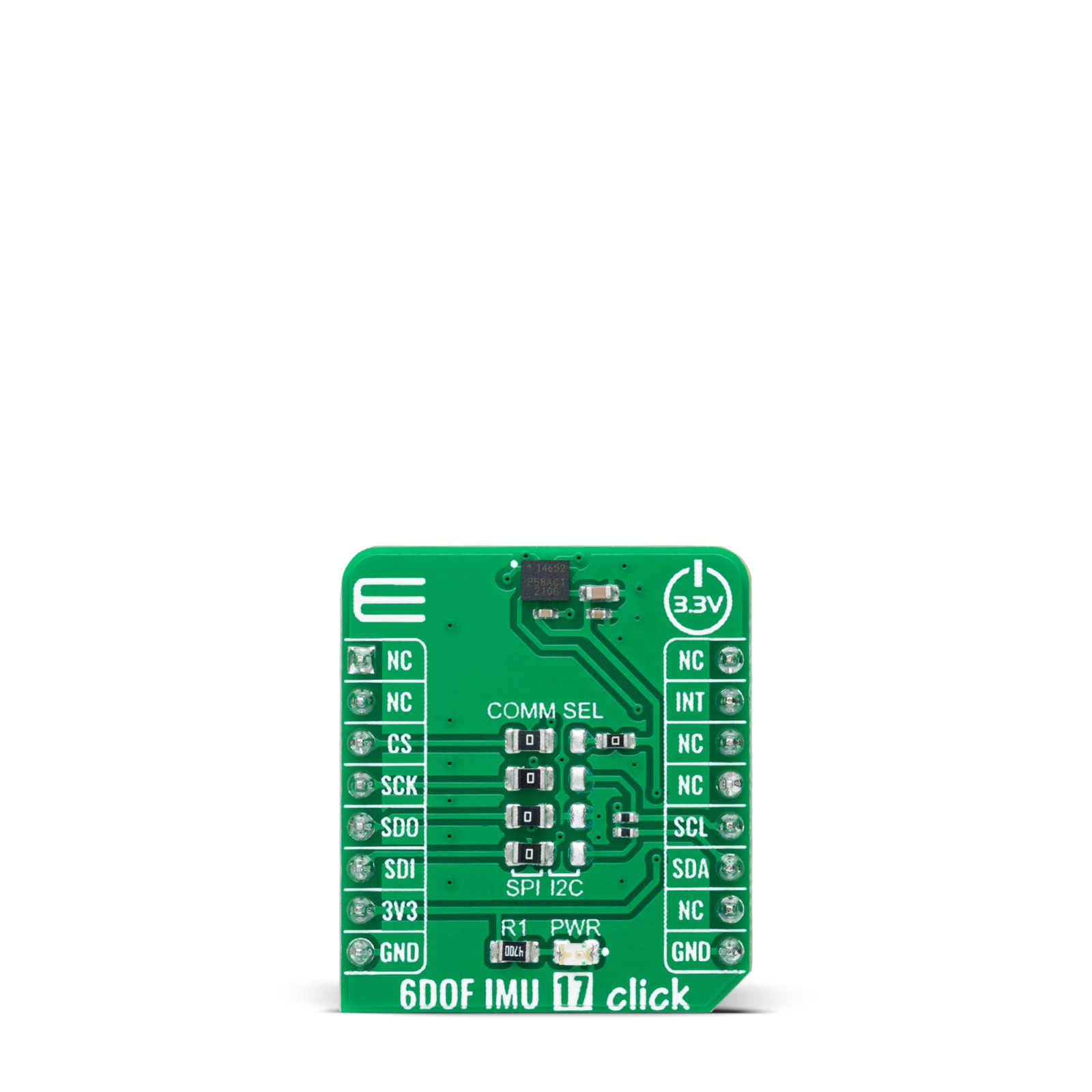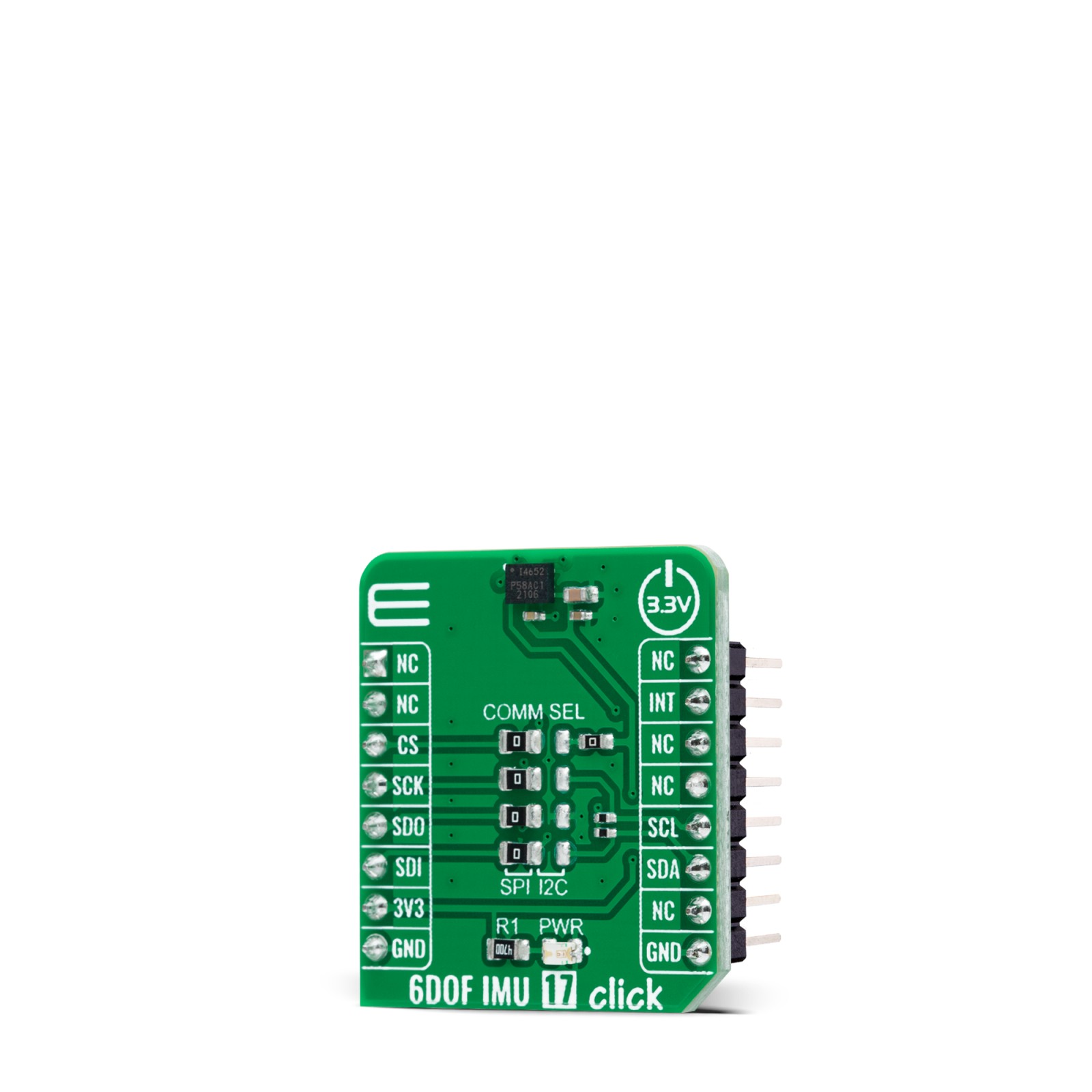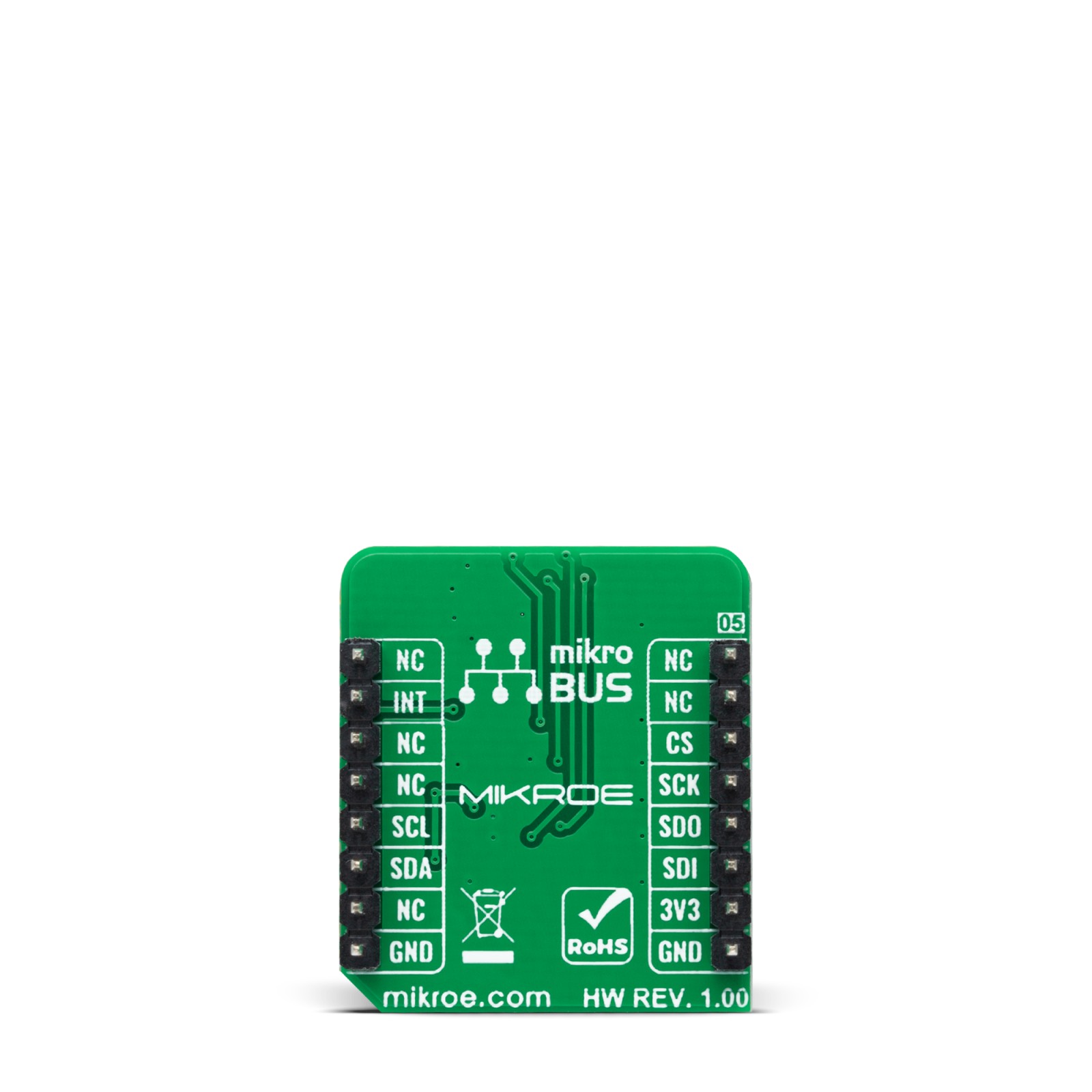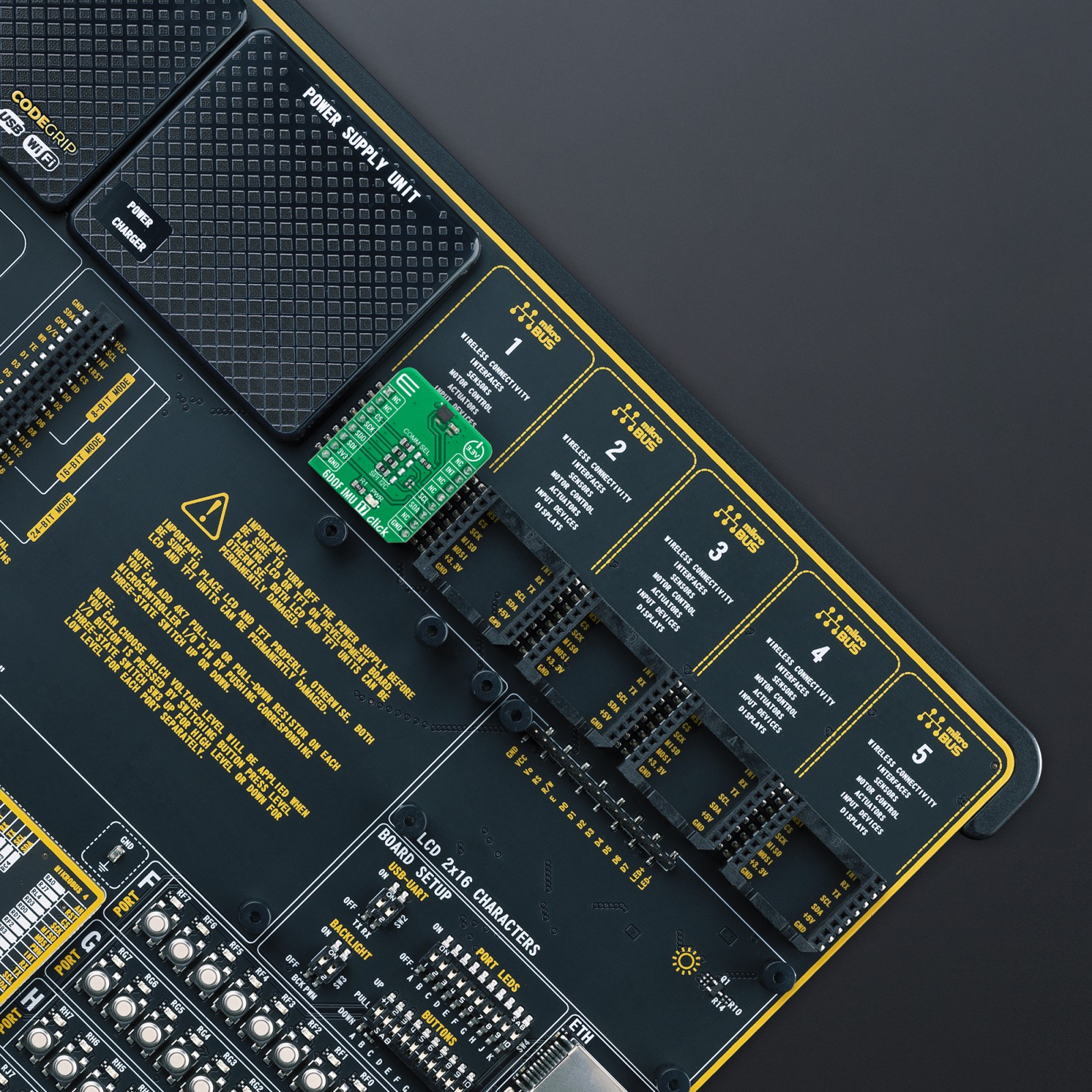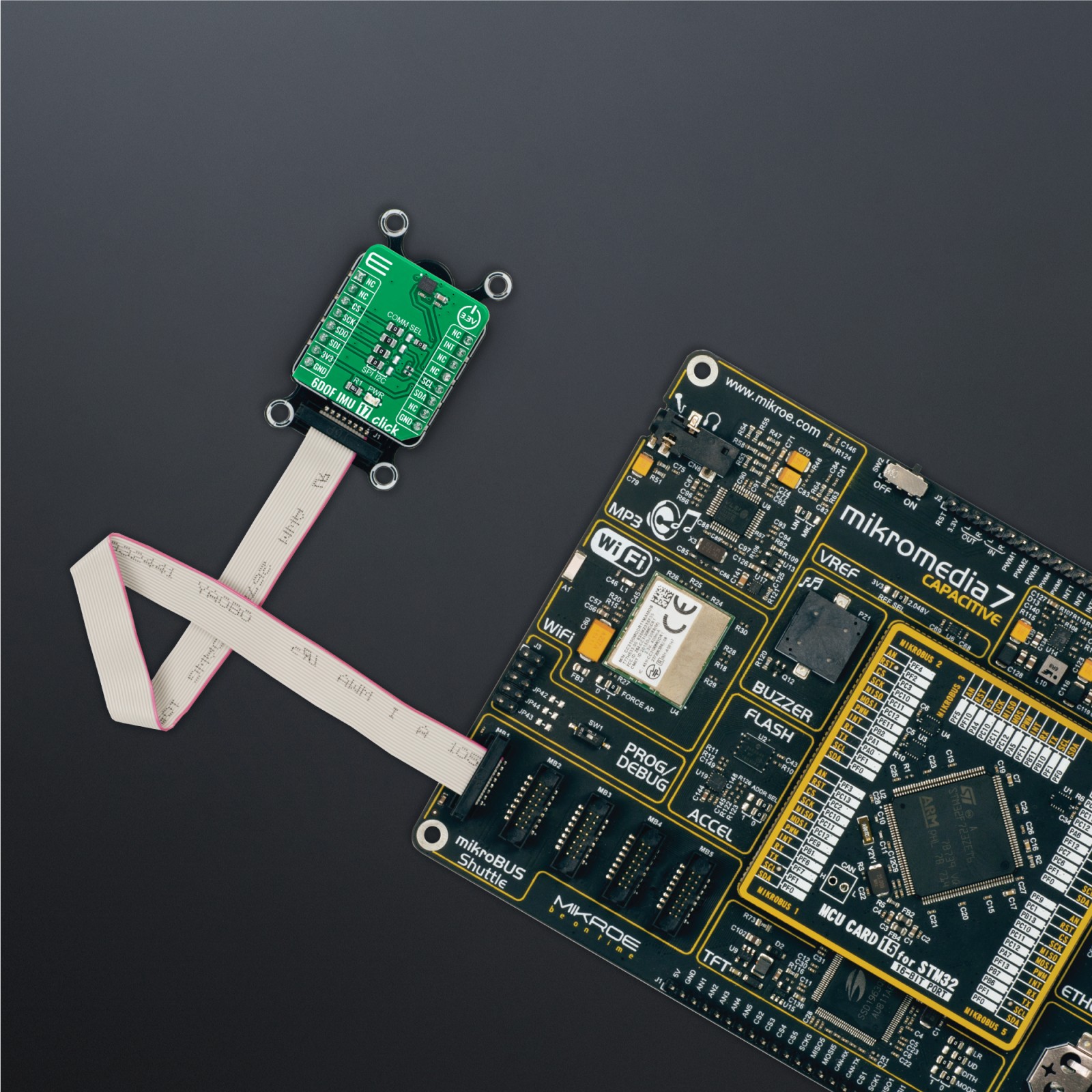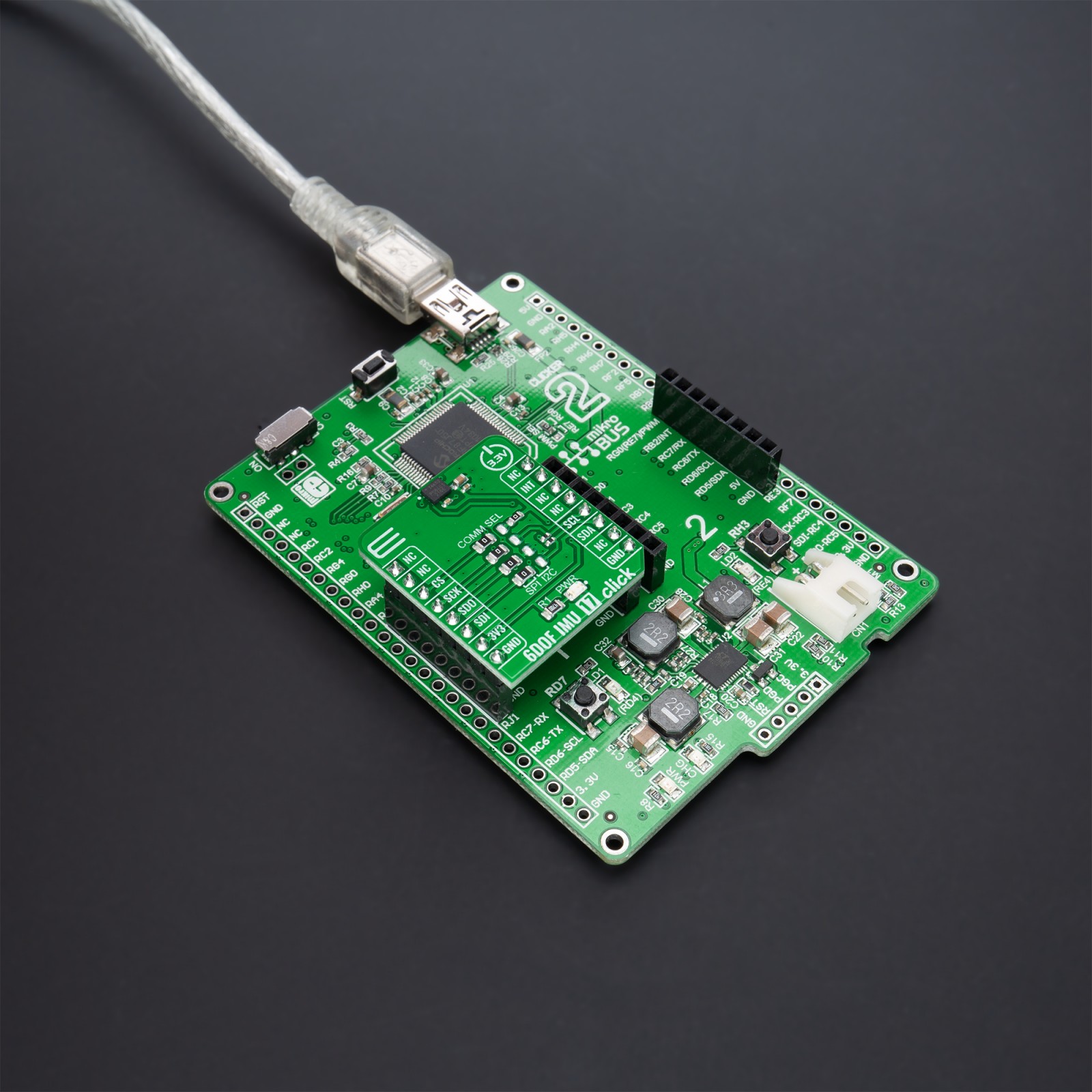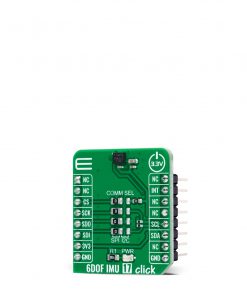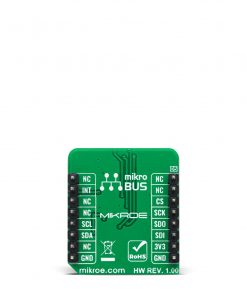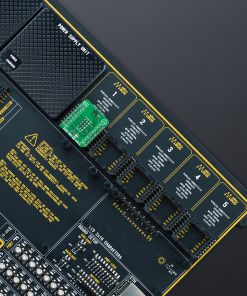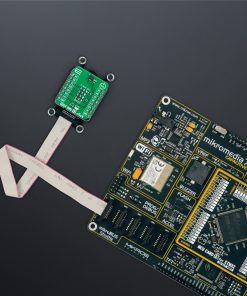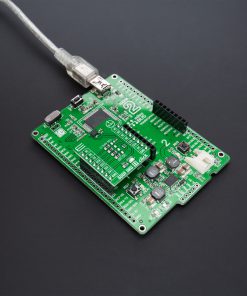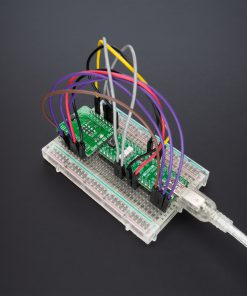6DOF IMU 17 Click
R545.00 ex. VAT
6DOF IMU 17 Click is a compact add-on board that contains a 6-axis inertial measurement unit. This board features the IIM-42652, a 6-axis SmartIndustrial™ MotionTracking device that supports an extended operating temperature range for industrial applications from TDK InvenSense. It combines a 3-axis gyroscope and a 3-axis accelerometer featuring a 2K-byte FIFO that can lower the traffic on the serial bus interface (SPI or I2C) and reduce power consumption by allowing the system processor to burst read sensor data and then go into a low-power mode. This Click board™ represents an excellent choice for applications like tilt sensing, navigation, orientation measurement, platform stabilization, robotics, and many more.
6DOF IMU 17 Click is supported by a mikroSDK compliant library, which includes functions that simplify software development. This Click board™ comes as a fully tested product, ready to be used on a system equipped with the mikroBUS™ socket.
Stock: Lead-time applicable.
| 5+ | R517.75 |
| 10+ | R490.50 |
| 15+ | R463.25 |
| 20+ | R445.81 |

